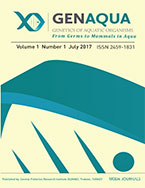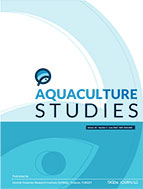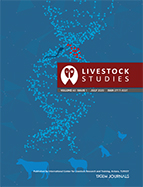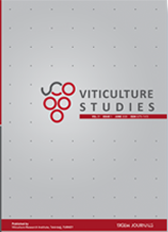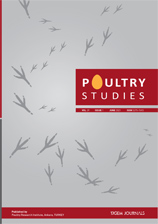Enhancing Growth and Reproductive Performance of Pangasianodon hypophthalmus Brooders Through Multi-Strain Probiotic Supplementation in Induced Breeding
2 University of Veterinary and Animal Sciences, Faculty of Fisheries and Wildlife, Department of Wildlife and Ecology, Lahore, Punjab, Pakistan. (54000)
3 University of Veterinary and Animal Sciences, Faculty of veterinary sciences, Institute of Microbiology, Lahore, Punjab, Pakistan (54000) DOI : 10.4194/TRJFAS28003 Viewed : 4 - Downloaded : 2 Due to the increasing global demand for protein, the commercial cultivation of striped catfish (Pangasianodon hypophthalmus) has significantly expanded, highlighting the need for sustainable growth and breeding strategies. In this context, the novelty of combining probiotics and hormones offers a promising approach to enhance both sustainability and productivity in aquaculture. This study aimed to evaluated the growth performance and induced breeding response of P. hypophthalmus brooders under the influence of multi-strain probiotics and hormonal treatments using pituitary gland (PG) extract and Ovaprim. Brooders were divided into four groups: T1 (basal diet 35% CP+Lactobacillus rhamnosus), T2 (basal diet 35% CP+Bacillus subtilis), T3 (basal diet 35% CP + L. rhamnosus + B. subtilis), and a control group fed only the basal diet of 35% CP. The culture was carried out in ponds with clayey, fertile soil, optimal pH (7.5–8.5), and proper drainage. Male and female brooders were cultured separately to avoid uncontrolled spawning. Growth performance was assessed via weight gain, feed utilization metrics, and reproductive parameters following hormonal induction.
Statistical analysis (ANOVA and Duncan`s multiple range test) revealed that T3 showed the best overall performance. T3 brooders exhibited the highest mean net weight gain (136.31±10.34 g), specific growth rate (SGR: 0.333±0.01), protein efficiency ratio (PER: 6.88±0.04), and feed conversion efficiency (FCE: 206%), along with the lowest feed conversion ratio (FCR: 0.48±0.02). Reproductive outcomes were also superior in T3, with the highest fecundity (128.93), fertilization rate (73%), and hatching rate (62%) under Ovaprim and PG hormone application.
These findings highlight the effectiveness of multi-strain probiotics as a sustainable and viable alternative to conventional growth promoters in aquaculture. The integration of probiotics performance, offering a feasible strategy for large-scale catfish production.
Keywords : Brooder Reproductive performance Fish Growth Multi strain probiotics Pangasius hypophthalmus



